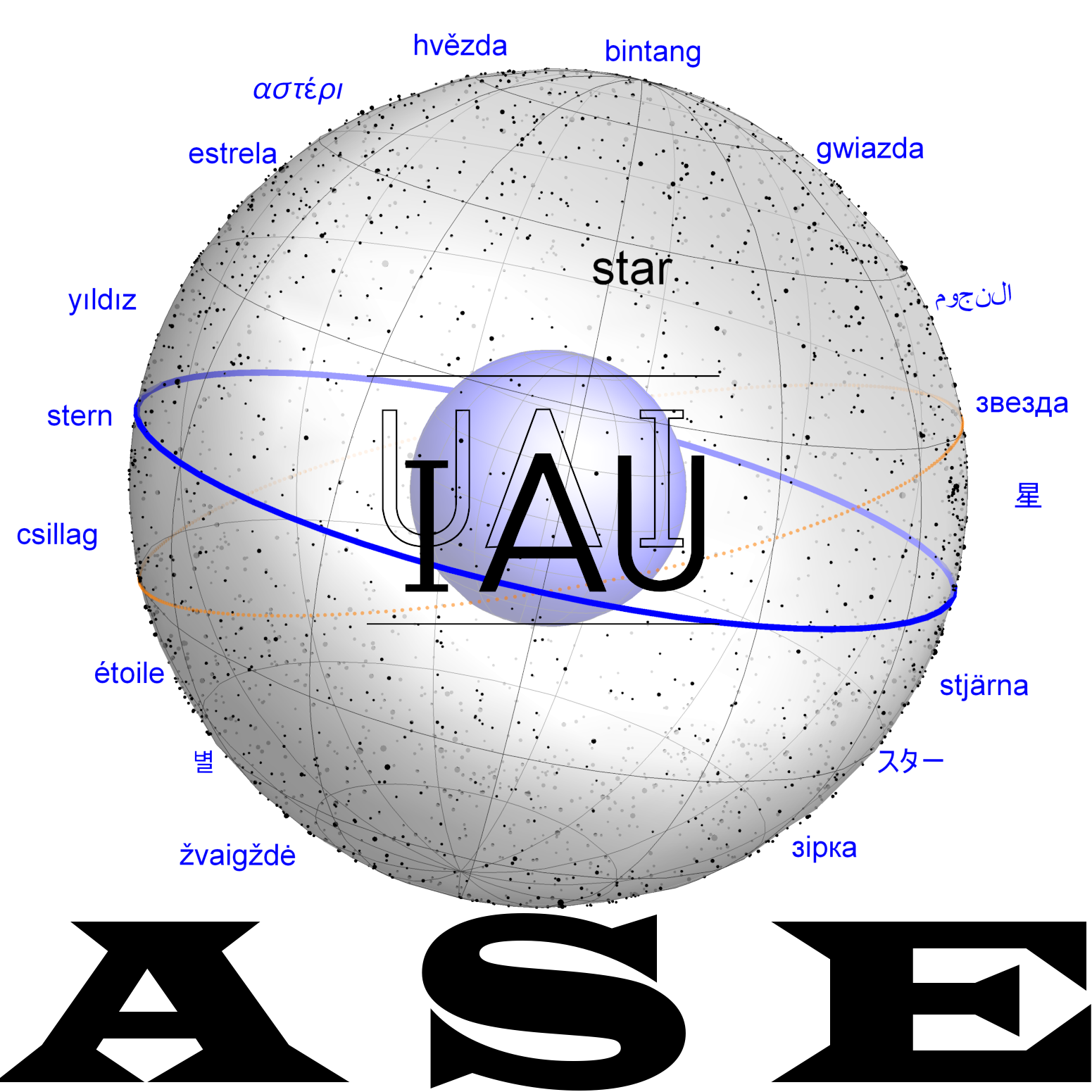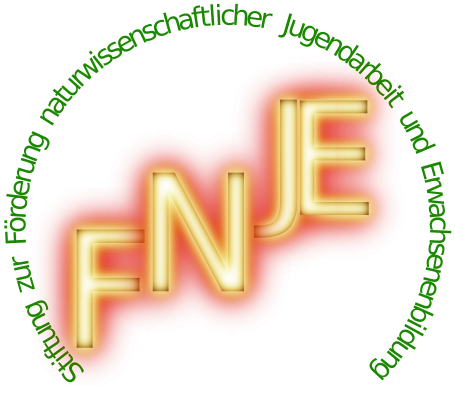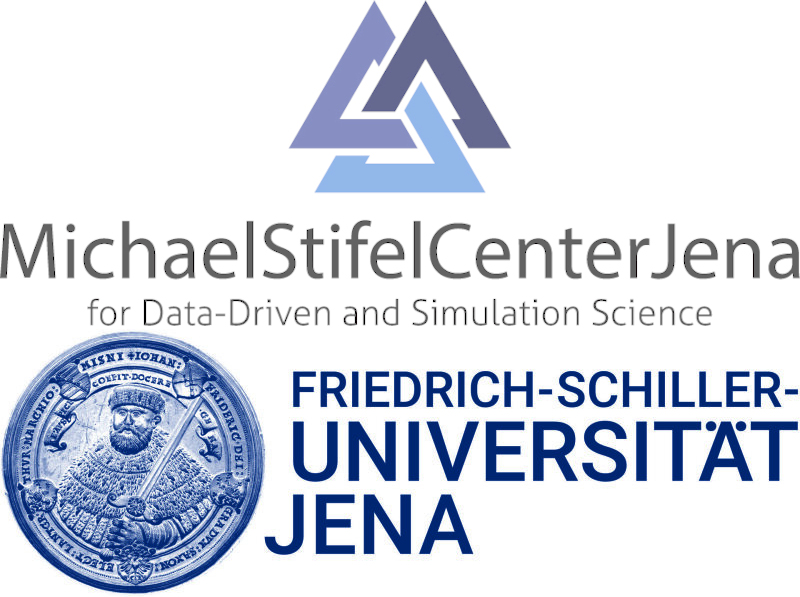IBILA.É.MAḪ: Difference between revisions
DavidHilder (talk | contribs) No edit summary |
DavidHilder (talk | contribs) No edit summary |
||
| Line 9: | Line 9: | ||
|- |
|- |
||
|'''MUL.APIN.''' |
|'''MUL.APIN.''' |
||
(1) Stars of Enlil (no. 20): MUL ša<sub>2</sub> ina ṭur-ri-šu<sub>2</sub> GUB-zu <sup>mul</sup>IBILA.É.MAḪ / DUMU reš-tu-u<sub>2</sub> ša<sub>2</sub> <sup>d</sup>A-nu-um "The star that stands on its (i.e. <sup>mul</sup>MAR.GÍD.DA.AN.NA "Anu's wagon") rope (perhaps a knot?)."): 'Heir of the Majestic Temple, firstborn of Anu' (I i 21-22) [MA, 24-25, 125; Hunger-Steele 2018, 34]; for a parallel see: mul ša i-na ṭu-ri-ša gub-[zu] "The star that stands on its rope (knot?)" [KAV 218, B iii 11; Horowitz 2014, 39, col. iii 11]; however, it is not obvious that the same star is meant here, cf. [BPO 2, 5; Horowitz 1989-90, 116, BM 54817:9']. |
(1) Stars of Enlil (no. 20): MUL ''ša''<sub>2</sub> ''ina ṭur-ri-šu''<sub>2</sub> GUB-''zu'' <sup>mul</sup>IBILA.É.MAḪ / DUMU ''reš-tu-u''<sub>2</sub> ''ša''<sub>2</sub> <sup>d</sup>''A-nu-um'' "The star that stands on its (i.e. <sup>mul</sup>MAR.GÍD.DA.AN.NA "Anu's wagon") rope (perhaps a knot?)."): 'Heir of the Majestic Temple, firstborn of Anu' (I i 21-22) [MA, 24-25, 125; Hunger-Steele 2018, 34]; for a parallel see: ''mul ša i-na ṭu-ri-ša gub-''[''zu''] "The star that stands on its rope (knot?)" [KAV 218, B iii 11; Horowitz 2014, 39, col. iii 11]; however, it is not obvious that the same star is meant here, cf. [BPO 2, 5; Horowitz 1989-90, 116, BM 54817:9']. |
||
| |
| |
||
|- |
|- |
||
|'''List of stars VR 46, 1:13.''' |
|'''List of stars VR 46, 1:13.''' |
||
<sup>mul</sup>DUMU×NITA É.MAḪ = <sup>d</sup>DI.KU<sub>5</sub> 'Heir of the exalted temple = Madānu ('Divine Judge') [HBA, 51:13; Wee 2016, 162-3:13]. MLC 1866 (col. iv 15ʹ). <sup>mul</sup>IBILA.<É>.MAḪ <sup>d</sup>E<sub>2</sub>-a ˹MUL˺ [DU]MU É "Heir of the exalted temple, Ea, asterism, son of the temple" [Beaulieu et al. 2018, 38, 42], for a discussion see. [ibid., 59-60]. Hemerologies. In the months of nisan and ulul, prayers to <sup>mul</sup>IBILA.É.MAḪ [Langdon 1935, 81; 4R, 32 i 48, 33 i 49; Landsberger 1915, 128; Reiner 1995, 21]. Spell. ÉN DUMU.UŠ É.MAḪ DUMU.UŠ É.MAḪ aplu rabû ša Enlil attama / ištu Ekur [t]ūridamma ina qabal šamê itti <sup>mul</sup>MAR.GÍD.DA tazzaz "Spell. O Firstborn of Emach, Firstborn of Emach, you are the eldest son of Enlil, / You came out of Ekur, and you stand in the middle of the sky with the Wagon," quoted in [Reiner 1995, 21, note 71]. Stev.O.T.. Two predictions: a) DIŠ <sup>ul</sup>DUMU.UŠ.É.MAḪ ša <sup>ul</sup>MAR.GÍD.DA.<AN.NA> GAL-ti ana <sup>ul</sup>ME.GAR is-niq BE.ME GAL<sub>2</sub>-ši DIŠ KI.MIN is-si SU. KU<sub>2</sub> GAL<sub>2</sub>-ši "If the Firstborn of Emah, (part of) the great [Celestial] Wagon, has approached Jupiter, pestilence will come; if it has withdrawn, famine will come." [Langdon 1913-23, 231:4-5, Pl. XVII; Reiner 1995, 20-21, note 73]. |
<sup>mul</sup>DUMU×NITA É.MAḪ = <sup>d</sup>DI.KU<sub>5</sub> 'Heir of the exalted temple = ''Madānu'' ('Divine Judge') [HBA, 51:13; Wee 2016, 162-3:13]. MLC 1866 (col. iv 15ʹ). <sup>mul</sup>IBILA.<É>.MAḪ <sup>d</sup>''E''<sub>2</sub>-''a'' ˹MUL˺ [DU]MU É "Heir of the exalted temple, Ea, asterism, son of the temple" [Beaulieu et al. 2018, 38, 42], for a discussion see. [ibid., 59-60]. Hemerologies. In the months of nisan and ulul, prayers to <sup>mul</sup>IBILA.É.MAḪ [Langdon 1935, 81; 4R, 32 i 48, 33 i 49; Landsberger 1915, 128; Reiner 1995, 21]. Spell. ÉN DUMU.UŠ É.MAḪ DUMU.UŠ É.MAḪ ''aplu rabû ša Enlil attama'' / ''ištu Ekur'' [''t'']''ūridamma ina qabal šamê itti'' <sup>mul</sup>MAR.GÍD.DA ''tazzaz'' "Spell. O Firstborn of Emach, Firstborn of Emach, you are the eldest son of Enlil, / You came out of Ekur, and you stand in the middle of the sky with the Wagon," quoted in [Reiner 1995, 21, note 71]. Stev.O.T.. Two predictions: a) DIŠ <sup>ul</sup>DUMU.UŠ.É.MAḪ ''ša'' <sup>ul</sup>MAR.GÍD.DA.<AN.NA> GAL-''ti ana'' <sup>ul</sup>ME.GAR ''is-niq'' BE.ME GAL<sub>2</sub>-''ši'' DIŠ KI.MIN ''is-si'' SU. KU<sub>2</sub> GAL<sub>2</sub>-''ši'' "If the Firstborn of Emah, (part of) the great [Celestial] Wagon, has approached Jupiter, pestilence will come; if it has withdrawn, famine will come." [Langdon 1913-23, 231:4-5, Pl. XVII; Reiner 1995, 20-21, note 73]. |
||
| |
| |
||
|} |
|} |
||
=== Additional === |
=== Additional === |
||
'''II. Deity.''' |
|||
==== II. Deity. ==== |
|||
The deity <sup>d</sup>DI.KUD or <sup>d</sup>DI. |
The deity <sup>d</sup>DI.KUD or <sup>d</sup>DI.KU<sub>5</sub>, with whom <sup>mul</sup>IBILA.É.MAḪ is correlated in VR 46, 1:13, has various identifications: (1) = <sup>d</sup>''Ma(n)dānu'' = <sup>d</sup>''Daj(j)ānu'' "(Divine) judge," "bearing the throne of Marduk," according to AN: <sup>d</sup>''A-num'' (II 253-254), (2) = ''Ishtaran'', according to <sup>d</sup>(''iš-ta-ran'')DI. KUD = dumu <sup>d</sup>Tišpak.ke<sub>4</sub> in AN: <sup>d</sup>''A-num'' (V 289), (3) = a mythological personage from Shamash's entourage, "the judge of Shamash," according to AN: <sup>d</sup>''A-num'' (III 174) [Litke 1998, 97 (especially note 254), 135, 195]. Which of these identities is implied here remains undisclosed. |
||
'''III. Identity.''' |
|||
==== III. Identity. ==== |
|||
= β Ursae Minoris [G. 191; Weidner 1957-59, 78]; at epoch -1000 the pole of the world was located near this star; |
= β Ursae Minoris [G. 191; Weidner 1957-59, 78]; at epoch -1000 the pole of the world was located near this star; |
||
| Line 33: | Line 32: | ||
{| class="wikitable" |
{| class="wikitable" |
||
|- |
|- |
||
! scope="col" style="width: 60%;" | Kurtik (2022) |
! scope="col" style="width: 60%;" | Kurtik (2022, i02) |
||
! scope="col" style="width: 40%;" | Gössmann (1950) |
! scope="col" style="width: 40%;" | Gössmann (1950) |
||
|- |
|- |
||
Revision as of 10:13, 6 April 2025
mulIBILA.É.MAḪ is an ancient Mesopotamian asterism.
Dictionary
Kurtik with Hilder, Hoffmann, Horowitz, Kim
Var. readings and designations: mulDUMU.UŠ.É.MAḪ, mulDUMU.UŠ.AN.MAḪ; mulDUMU×NITA É.MAḪ; = lit. "Firstborn of Emach" or "Heir of the Majestic Temple"; star in the constellation of the Little Bear, possibly Polaris(?) [G. 191; ASM, 273; Reiner 1995, 20-21; Beaulieu et al. 2018, 73].
| Sources | Identifications |
|---|---|
| MUL.APIN.
(1) Stars of Enlil (no. 20): MUL ša2 ina ṭur-ri-šu2 GUB-zu mulIBILA.É.MAḪ / DUMU reš-tu-u2 ša2 dA-nu-um "The star that stands on its (i.e. mulMAR.GÍD.DA.AN.NA "Anu's wagon") rope (perhaps a knot?)."): 'Heir of the Majestic Temple, firstborn of Anu' (I i 21-22) [MA, 24-25, 125; Hunger-Steele 2018, 34]; for a parallel see: mul ša i-na ṭu-ri-ša gub-[zu] "The star that stands on its rope (knot?)" [KAV 218, B iii 11; Horowitz 2014, 39, col. iii 11]; however, it is not obvious that the same star is meant here, cf. [BPO 2, 5; Horowitz 1989-90, 116, BM 54817:9']. |
|
| List of stars VR 46, 1:13.
mulDUMU×NITA É.MAḪ = dDI.KU5 'Heir of the exalted temple = Madānu ('Divine Judge') [HBA, 51:13; Wee 2016, 162-3:13]. MLC 1866 (col. iv 15ʹ). mulIBILA.<É>.MAḪ dE2-a ˹MUL˺ [DU]MU É "Heir of the exalted temple, Ea, asterism, son of the temple" [Beaulieu et al. 2018, 38, 42], for a discussion see. [ibid., 59-60]. Hemerologies. In the months of nisan and ulul, prayers to mulIBILA.É.MAḪ [Langdon 1935, 81; 4R, 32 i 48, 33 i 49; Landsberger 1915, 128; Reiner 1995, 21]. Spell. ÉN DUMU.UŠ É.MAḪ DUMU.UŠ É.MAḪ aplu rabû ša Enlil attama / ištu Ekur [t]ūridamma ina qabal šamê itti mulMAR.GÍD.DA tazzaz "Spell. O Firstborn of Emach, Firstborn of Emach, you are the eldest son of Enlil, / You came out of Ekur, and you stand in the middle of the sky with the Wagon," quoted in [Reiner 1995, 21, note 71]. Stev.O.T.. Two predictions: a) DIŠ ulDUMU.UŠ.É.MAḪ ša ulMAR.GÍD.DA.<AN.NA> GAL-ti ana ulME.GAR is-niq BE.ME GAL2-ši DIŠ KI.MIN is-si SU. KU2 GAL2-ši "If the Firstborn of Emah, (part of) the great [Celestial] Wagon, has approached Jupiter, pestilence will come; if it has withdrawn, famine will come." [Langdon 1913-23, 231:4-5, Pl. XVII; Reiner 1995, 20-21, note 73]. |
Additional
II. Deity.
The deity dDI.KUD or dDI.KU5, with whom mulIBILA.É.MAḪ is correlated in VR 46, 1:13, has various identifications: (1) = dMa(n)dānu = dDaj(j)ānu "(Divine) judge," "bearing the throne of Marduk," according to AN: dA-num (II 253-254), (2) = Ishtaran, according to d(iš-ta-ran)DI. KUD = dumu dTišpak.ke4 in AN: dA-num (V 289), (3) = a mythological personage from Shamash's entourage, "the judge of Shamash," according to AN: dA-num (III 174) [Litke 1998, 97 (especially note 254), 135, 195]. Which of these identities is implied here remains undisclosed.
III. Identity.
= β Ursae Minoris [G. 191; Weidner 1957-59, 78]; at epoch -1000 the pole of the world was located near this star;
= Polaris(?) [BPO 2, 7; Beaulieu et al. 2018, 60, 73];
= α Ursae Minoris(?) [MA, 137; ASM, 273].
Historical Dictionaries
| Kurtik (2022, i02) | Gössmann (1950) |
|---|---|
| вар. чтения и обозначения: mulDUMU.UŠ.É.MAḪ, mulDUMU.UŠ.AN.MAḪ; mulDUMU×NITA É.MAḪ; = букв. «Первенец Эмаха» или «Наследник Величественного Храма»; звезда в созвездии Малой Медведицы, возможно, Полярная звезда(?) [G. 191; ASM, 273; Reiner 1995, 20–21; Beaulieu et al. 2018, 73].
I. Источники. MUL.APIN. (1) Звезды Энлиля (№ 20): MUL ša2 ina ṭur-ri-šu2 GUB-zu mulIBILA.É.MAḪ / DUMU reš-tu-u2 ša2 dA-nu-um «Звезда, которая стоит на ее (т.е. mulMAR.GÍD.DA.AN.NA «Повозки Ану») веревке (возможно, узле?): Наследник Величественного Храма, первенец Ану» (I i 21–22) [MA, 24–25, 125; Hunger–Steele 2018, 34]; параллель см.: mul ša i-na ṭu-ri-ša gub-[zu] «Звезда, что на ее веревке (узле?) стоит» [KAV 218, B iii 11; Horowitz 2014, 39, col. iii 11]; однако не очевидно, что здесь речь идет об одной и той же звезде, см. [BPO 2, 5; Horowitz 1989–90, 116, BM 54817:9']. Список звезд VR 46, 1:13. mulDUMU×NITA É.MAḪ = dDI.KU5 «Наследник возвышенного храма = Madānu (“Божественный судья”) [HBA, 51:13; Wee 2016, 162–3:13]. MLC 1866 (col. iv 15ʹ). mulIBILA.<É>.MAḪ dE2-a ˹MUL˺ [DU]MU É «Наследник возвышенного храма, Эа, звезда, сын храма» [Beaulieu et al. 2018, 38, 42], обсуждение см. [ibid., 59–60]. Гемерологии. В месяцах нисану и улулу молитвы к mulIBILA.É.MAḪ [Langdon 1935, 81; 4R, 32 i 48, 33 i 49; Landsberger 1915, 128; Reiner 1995, 21]. Заклинание. ÉN DUMU.UŠ É.MAḪ DUMU.UŠ É.MAḪ aplu rabû ša Enlil attama / ištu Ekur [t]ūridamma ina qabal šamê itti mulMAR.GÍD.DA tazzaz «Заклинание. О, Первенец Эмаха, Первенец Эмаха, ты старший сын Энлиля, / Ты вышел из Экура, и ты стоишь в середине неба с Повозкой», цит. по [Reiner 1995, 21, note 71]. Stev.O.T. Два предсказания: a) DIŠ ulDUMU.UŠ.É.MAḪ ša ulMAR.GÍD.DA.<AN.NA> GAL-ti ana ulME.GAR is-niq BE.ME GAL2-ši DIŠ KI.MIN is-si SU.KU2 GAL2-ši «Если Первенец Эмаха, (часть) великой [Небесной] Повозки, к Юпитеру приблизился, наступит мор; если же удалился, голод наступит» [Langdon 1913–23, 231:4–5, Pl. XVII; Reiner 1995, 20–21, note 73]. II. Божество. Божество dDI.KUD или dDI.KU5, с которым mulIBILA.É.MAḪ соотносится в VR 46, 1:13, имеет различные отождествления: (1) = dMa(n)dānu = dDaj(j)ānu «(Божественный) судья», «несущий трон Мардука», согласно AN:dA-num (II 253–254), (2) = Иштаран, согласно d(iš-ta-ran)DI.KUD = dumu dTišpak.ke4 в AN:dA-num (V 289), (3) = мифологический персонаж из окружения Шамаша, «судья Шамаша», согласно AN:dA-num (III 174) [Litke 1998, 97 (в особенности note 254), 135, 195]. Какое из этих тождеств подразумевается в данном случае, остается нераскрытым. III. Отождествление. = β Ursae Minoris [G. 191; Weidner 1957–59, 78]; в эпоху –1000 полюс мира располагался вблизи этой звезды; = Polaris(?) [BPO 2, 7; Beaulieu et al. 2018, 60, 73]; = α Ursae Minoris(?) [MA, 137; ASM, 273]. |
Example |




